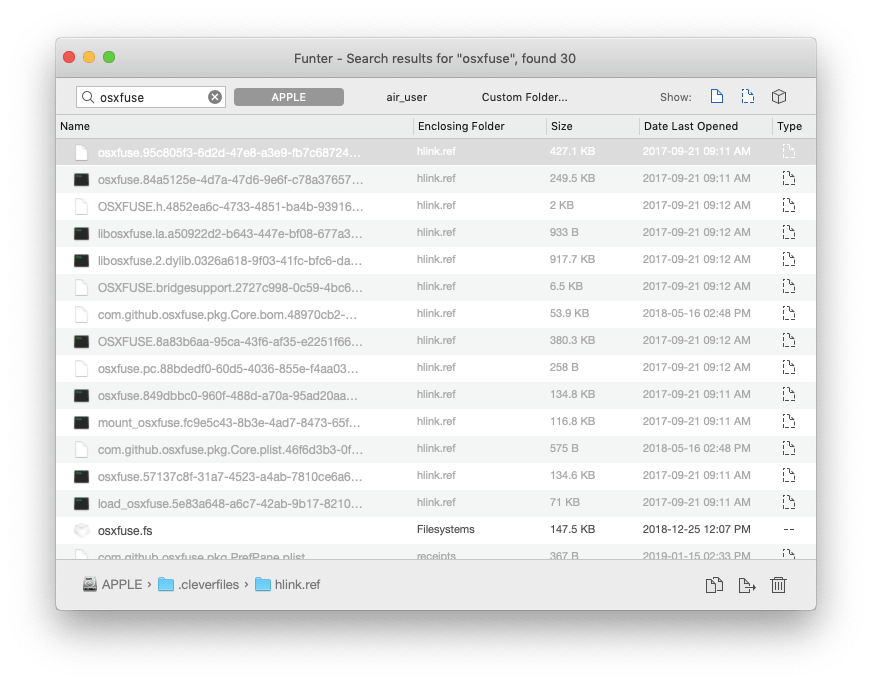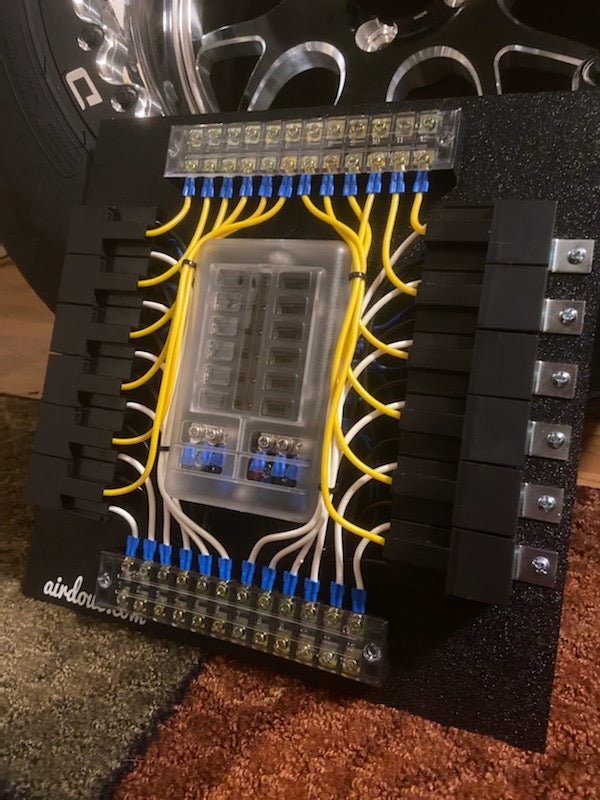

In that case you want the node IDs to remain valid, but refer to files that have already been unlinked from the file system hierarchy. > Besides, how many FUSE filesystems implement FORGET?Īny file system that wants to remove files in the background (meaning: not by calling unlink() through the FUSE mount) must likely do proper refcounting on such files, and provide an implementation of FORGET.įor example, a file system that can give information on live football matches may want to remove files/directories belonging to matches that have already ended. This doesn't seem to be documented explicitly, but is somewhat revealed by this printf():

Note that this is not a universal requirement, but at least one that the macOS NFSv4 client enforces. > I don't understand the comment about leaking memory, nfs file handles don't have to be persistent.Īs long as the file the NFSv4 file handle refers to is still usable (i.e., linked into the file system), the NFSv4 file handle must remain usable.
How to use fuse for mac how to#
This means that memory usage of fuse-t will most likely just keep on growing as time progresses? Or it announces itself as using file handle mode FH4_VOLATILE_*, but UNIX-like NFSv4 clients hardly ever know how to deal with that. Your FUSE file system's FORGET method will probably never be called. This means that if you implement FUSE on top of NFSv4, you will most likely not be able to purge any state. You therefore see that in-kernel implementations of NFS servers rely on special file system methods to resolve objects by file handle, in addition to being able to resolve by path. Only when the kernel issues a FORGET call, may the server drop information corresponding to a given nodeid.Īs NFSv4 is designed to be stateless, servers may need to be able to process requests containing arbitrary file handles, regardless of how long ago they were returned as part of some prior request. For example, with FUSE the kernel and server share intimate knowledge on which part of the file system lives in the kernel's inode cache. If you need to reconnect to the shares just press the app and it will connect or reconnect.I do wonder how this library deals with some of the fundamental differences beween FUSE and NFSv4.

How to use fuse for mac mac#
If you need to reconnect to the shares just press the app and it will connect or reconnect.įor additional folders you must create the destination folder like - mkdir ~/o2homeĪfter it is working you can add a shortcut into your dock by navigating to /Users/Shared/ on your Mac open /Users/Shared and then dragging the sshfs_nfs.app into your dock. sshfs_mounts then edit in textedit.app.Īn example REMOTE_FOLDER LOCAL_FOLDER | empty local folder must exist /nfs/userdocs /Users/oconnor/userdocs /home/myfolder /Users/oconnor/o2homeĪfter it is working you can add a shortcut into your dock by navigating to your home folder on your Mac open ~ and then dragging the sshfs_nfs.app into your dock. You can add or change any number of mounts that sshfs-helper.sh. The script will create a file in your home folder called. If the mounts become stuck just rerun to reattach shares. The app is simply a wrapper for sshfs-helper.sh and assumes the script exists in your home folder.
How to use fuse for mac for mac#
We created a 'helper' script available that can be used with sshfs_nfs.app for mac to automount at login. On occasion the mount may become stuck or unresponsive you can force unmount via -ĭiskutil umount force /Users/oconnor/userdocs Using helper script If you are using an key-based-ssh you would add it's path to the IdentityFile paramater - adding ,IdentityFile=$HOME/.ssh/id_rsa to the end of the line. We give the volume a name volname=userdocs (shows mount point on your desktop), add some additional options for server connections, etc. You should mount one complete filesystem from the remote site, so this would be anything listed in /nfs for example. usr/local/bin/sshfs /Users/oconnor/userdocs -o volname =userdocs,reconnect,ServerAliveInterval =15,ServerAliveCountMax =3,idmap =user,auto_xattr,dev,suid,defer_permissions,noappledouble,noapplexattr OS X (Mac) helpful hintsĪs of OSX 10.15 Catilina we are not recommending to create mounts in the root path or / of the file system.Īn example of mounting from OSX on your local system is as follows - mkdir ~/userdocs Just remember to specify the PATH to the directory. You should mount sshfs via a directory in your home directory. Schl15 as a host to access the directory /nfs/userdocs/ps/meyer (in other


 0 kommentar(er)
0 kommentar(er)
